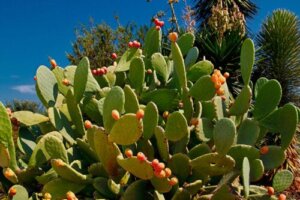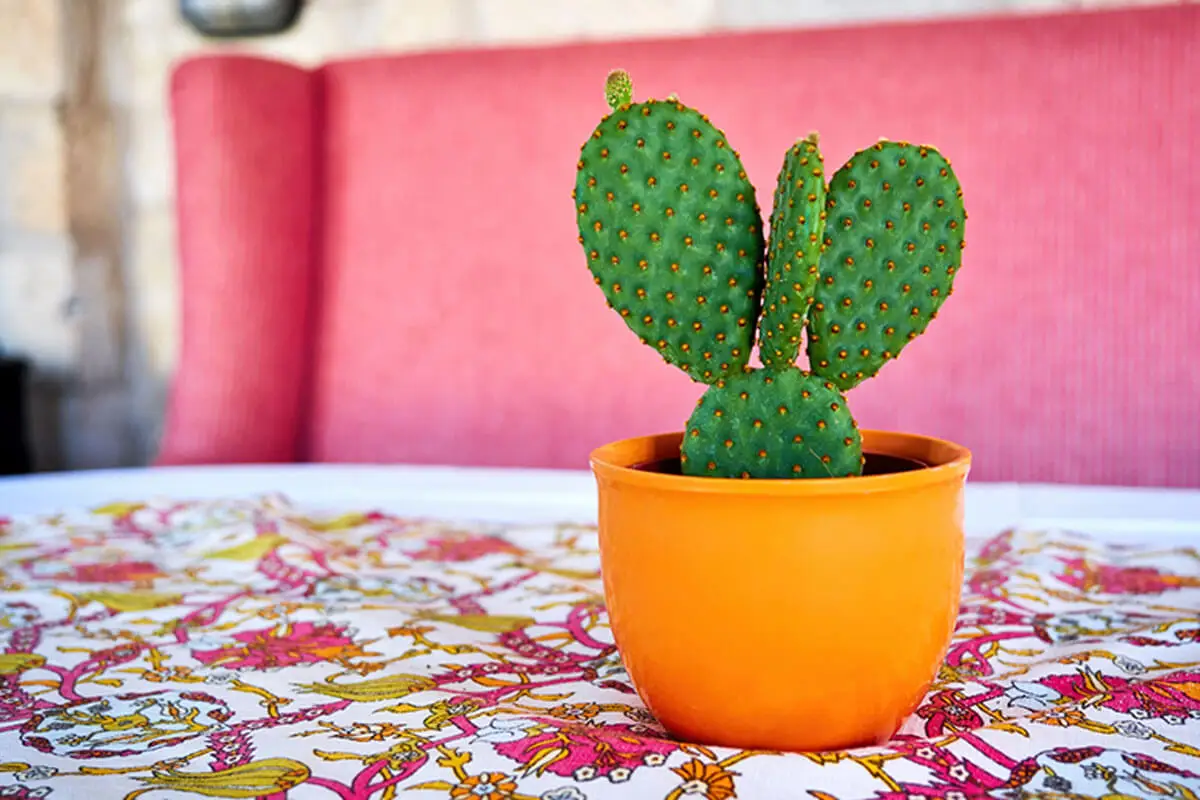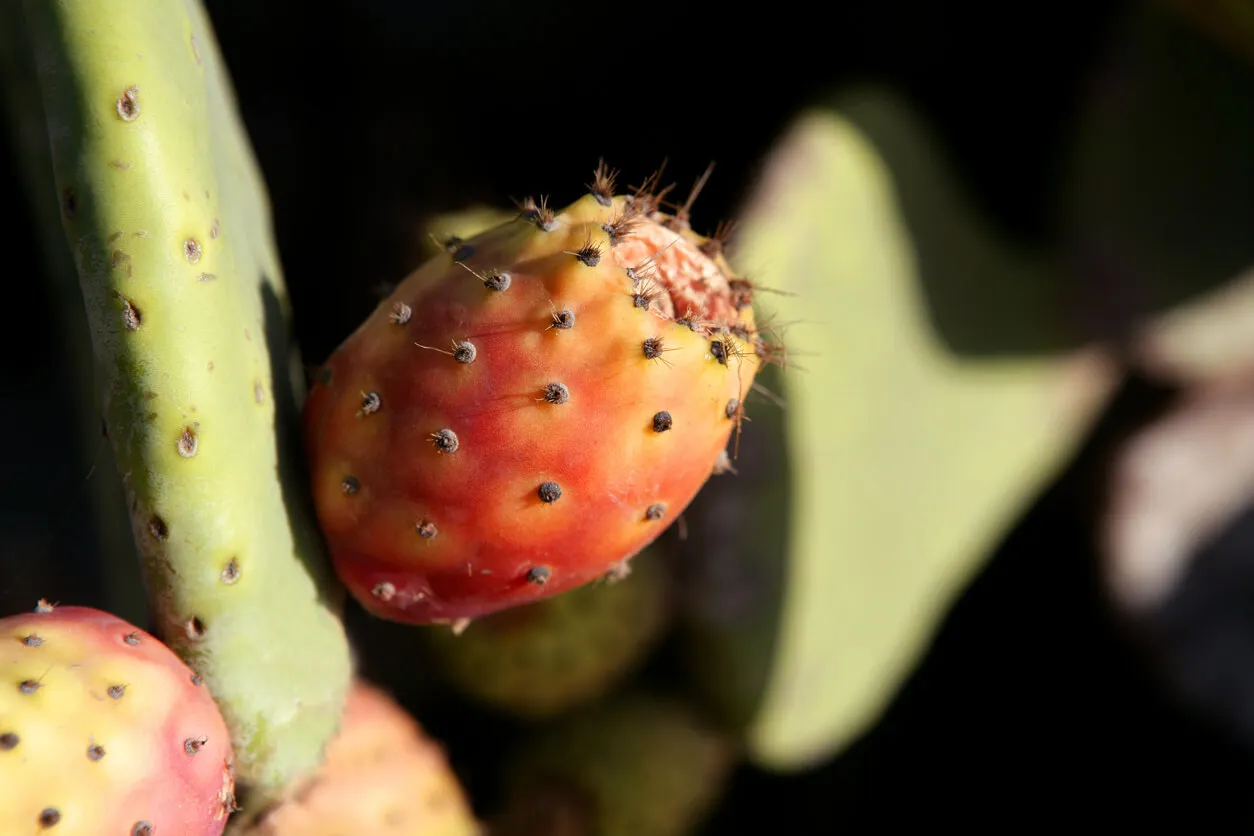How to Plant Nopal Cactus at Home: A Complete Guide

If you want to grow a prickly pear or nopal cactus at home, you should read this article, because we’re going to bring you a complete step-by-step guide on how to do it. This way, you will be able to enjoy this delicious vegetable whenever you want, with the ease of having it always available in your garden.
La Mexican Journal of Agricultural Sciences confirms that prickly pear cactus is cultivated for food, livestock, and even pharmaceutical purposes. But why purchase it from stores when you can plant it and enjoy all its benefits right at home?
How to plant nopal at home
The nopal is an easy plant to plant and take care of. Its scientific name is Opuntia ficus-indica and, as its appearance reveals, it’s a cactus. It also works as an ornamental plant, as it has very showy flowers.
You can plant it in a pot or directly at ground level in your garden. Next, we will delve into how to grow it so that, when you finish reading, you will make the decision to sow nopal at home once and for all.

Step by step to sow seeds
Growing nopal seeds is one of the methods you can follow to enjoy this plant, but it must be said that this is the way that will take the longest to give results. You can buy them in a specialized store or collect them when you buy some nopal to prepare.
Follow these steps to do the sowing:
- Choose the place where you are going to sow your nopal: pot or garden.
- Place the seeds directly in the soil, making sure to leave about 3 centimeters between each one.
- With your fingers, press them gently so that they’re buried.
- Take some soil and cover the seeds lightly. The extra layer of soil should be about 6 millimeters.
- Soak the soil with a little water. The idea is to keep the soil moist, but not too moist.
We think you may be interested in reading this, too: Tips for Planting and Looking After the Desert Rose at Home
Steps to sow a nopal cactus stalk
If sowing seeds is not an option for you, but you have a cactus stalk, don’t eat it this time; rather, sow it. This is how you should do it:
- Make sure the cactus is in good condition.
- Prepare the soil where you are going to grow it, whether in a pot or in a garden, and sow directly.
- Don’t add water while it’s developing strong roots. The plant will take the liquid it needs from its own reservoir.
- Be patient and enjoy watching your nopal grow and grow.
Caring for your nopal cactus plant
After planting your cactus, you must ensure some basic care for the plant to grow healthy so you can consume it with total peace of mind. Below, we’ll tell you about them.
Take care of the substrate
The nopal cactus requires a fertile substrate with good drainage. This can be achieved in several ways. One of them is to mix vermiculite (60%), coconut or peat (20%), and sandy soil (20%). Don’t forget to add some organic matter or compost, such as worm castings.
Finally, make sure to maintain the same quality of substrate over the years. Remember that the plant takes nutrients from there, causing it to lose permeability and oxygen. If this happens, it will affect the development.
Add fertilizer
The nopal will need to be fertilized once a month, preferably with a liquid product. Keep in mind that you should not use fertilizer during the winter; what you do during the fall or spring will suffice.
On the other hand, prefer nitrogen fertilizers during the planting stage and a phosphate and potassium fertilizer before and after flowering. Choose one of very low concentration.

Provide plenty of light
The nopal is a plant that usually occurs in arid areas, where it enjoys good sun exposure. When it’s grown at home, it’s necessary to provide it with similar conditions, so you should place it in an area where it receives direct light.
However, there is a recommendation that you should follow in the winter, which is to keep the plant in the shade. In this season, the leaves could be burned by the combination of frost and sun.
Prune when necessary
The nopal grows quite a lot and, if you let it, it will do so at its own pace. If you prefer to keep it controlled and in a certain shape, then prune it. The stalks you take will be useful to propagate if they’re in good condition.
Take advantage of pruning to remove damaged or wilted flowers and stems. It’s best to prevent the plant from continuing to exert itself and taking nutrients that will go to these damaged areas.
Like this article? You may also like to read: How to Grow a Succulent Garden and The Best Plants to Use
Why plant nopal cactus at home?
In addition to tasting the preparations, by consuming nopal on a frequent basis you will keep your body healthier. This is because nopal is rich in vitamins A, B, and C, as well as minerals (magnesium, sodium, calcium, and iron). On the other hand, this is a food that provides fiber, as reported by the Mexican Institute of Social Security (IMSS).
According to the available space you have and how you want to enjoy your nopal, you will choose a pot or direct soil. However, you must keep in mind important aspects such as the type of substrate, which must guarantee very good drainage. It’s also necessary that the plant receives good sun exposure, especially during the first stage of its growth.
If you decided to plant nopal from seeds, you should keep the substrate moist and leave them in a shaded area. This is a longer path that requires patience. However, it brings the satisfaction of manual labor and the possibility of having access to nopal cactus whenever you feel like it!
All cited sources were thoroughly reviewed by our team to ensure their quality, reliability, currency, and validity. The bibliography of this article was considered reliable and of academic or scientific accuracy.
- Méndez, L. P., Flores, F. T., Martín, J. D., Rodríguez, E. M. R., & Romero, C. D. (2015). Physicochemical characterization of cactus pads from Opuntia dillenii and Opuntia ficus indica. Food chemistry, 188, 393-398. https://www.sciencedirect.com/science/article/pii/S030881461500730X
- Torres-Ponce, R. L., Morales-Corral, D., Ballinas-Casarrubias, M. D. L., & Nevárez-Moorillón, G. V. (2015). El nopal: planta del semidesierto con aplicaciones en farmacia, alimentos y nutrición animal. Revista mexicana de ciencias agrícolas, 6(5), 1129-1142. https://www.scielo.org.mx/scielo.php?pid=S2007-09342015000500018
This text is provided for informational purposes only and does not replace consultation with a professional. If in doubt, consult your specialist.








